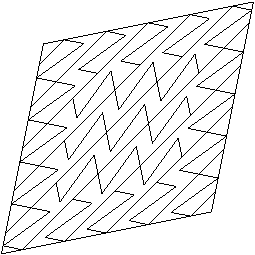Andrew I-kang Li |
|||
Contact mei (at) andrew (dot) li |
What are shape grammars? Here is an example. Suppose you have this design:
and you modify it to produce this design:
We can describe the transformation verbally, like this:
We can also describe it graphically, like this:
The transformation is graphic, but only in the second case is the description also graphic. The ‘graphicness’ of this second description is congenial to designers, who would usually rather look and draw than read and type (coordinates, for example). Now, think of creating a design as a series of such transformations: starting from a blank sheet of paper; adding, subtracting, and changing marks on the paper until the design is complete. We can describe all these transformations graphically. A set of these transformations (which we call rules) is a shape grammar, and a shape grammar defines shapes (which we also call designs). Suppose for example that you have a grammar consisting of these two rules:
If you begin with △ as your initial shape, you can generate designs like these: To generate these designs, start with the initial shape △, and transform it repeatedly by applying one of the rules. The ⇒ shows where you do this.
These examples are on the simple side, but they illustrate some important ideas: We can understand a design as the result of a process; We can understand that process as a series of transformations; and We can capture those transformations graphically. There is much more to say about shape grammars; the sources below are good places to start.
|
This design also uses the variant Nakata curve, but under a different series of transformations. |
|
